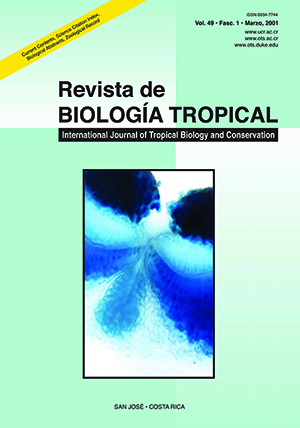Abstract
The fish and invertebrates community structure in the Sabancuy estuary was analyzed in two seasons and 14 sampling stations (13 along the estuary and one in the marine adjacent coast). No significant differences were found between seasons. The environmental frame defines two zones within the estuary, the first extends from the access highway to Sabancuy town until the Pujo mouth in the west; the second from the bridge to the estuary head in the east. The most abundant invertebrates were mollusks (51.8% of the total), in biomass the crustaceans dominated. The fish included 21 families and 33 species; the most abundant were Gerridae, Scianidae, Sparidae, Lutjanidae and Ciprinodontidae. The highest diversities of both communities correspond to the central part of the estuary. These communities include three sections with notable differences in faunal distribution: one is influenced by the exit to Terminos lagoon, the secondary in the estuary head and a third is in a transition zone defined by the proximity of the town access bridge. The ecological organization suggests a strong division caused by the bridge, both sides are scarce in habitats and nutrient resources and this is reflected in the low species counts.
##plugins.facebook.comentarios##

This work is licensed under a Creative Commons Attribution 4.0 International License.
Copyright (c) 2001 Revista de Biología Tropical
Downloads
Download data is not yet available.


